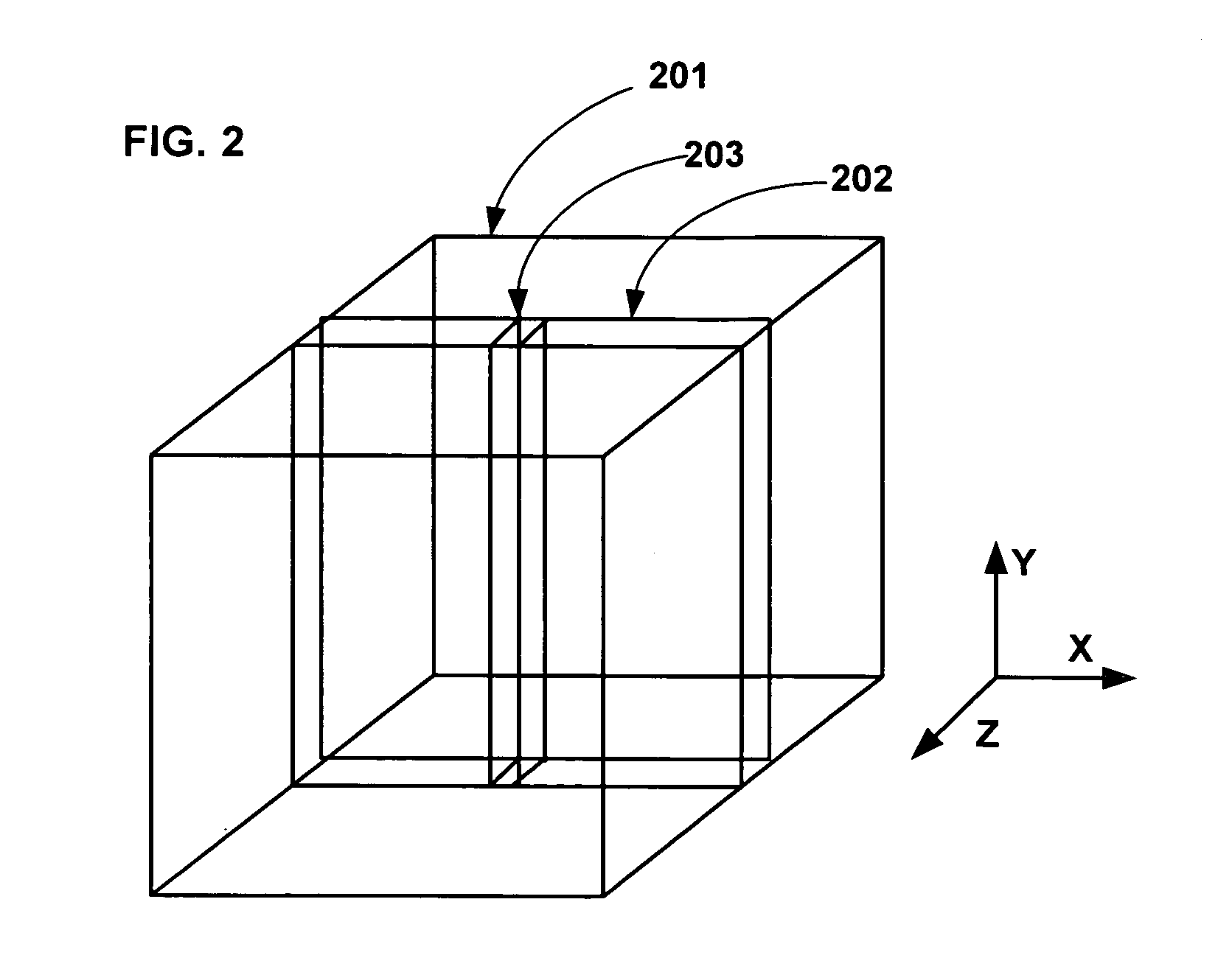Field image tomography for magnetic resonance imaging
a field image and magnetic resonance imaging technology, applied in the field of magnetic resonance imaging methods and apparatuses, can solve the problems of slow mri in prior art, achieve fast mri, avoid the use of sedation, and reduce the length of time
- Summary
- Abstract
- Description
- Claims
- Application Information
AI Technical Summary
Benefits of technology
Problems solved by technology
Method used
Image
Examples
Embodiment Construction
7.1 Apparatus of the Invention
[0080]Referring now to the various figures of the drawing wherein like reference characters refer to like parts, there is shown in FIG. 1 a schematic view of an exemplary magnetic resonance imaging (MRI) system 100 adapted for use with the Field Image Tomography (FIT) according to the present invention. Although a MRI system having a main magnet comprising a certain-shaped magnet is illustrated, this shall not constitute a limitation. Reference is made to U.S. Pat. No. 4,968,937, the teachings of which are incorporated by reference for other details of the exemplary MRI system 100.
[0081]The MRI system 100 includes an electromagnet 102, a computer 106, a main magnetic field control 108, a gradient coil sub-system 110, a gradient field control 112, an imager 114, a display device 116, an RF antenna sub-system 126, a T / R switch 120, an RF transmitter 122 and a receiver 124. It also includes an array of RFSCs 125 in a non-degenerate configuration such as a ...
PUM
 Login to View More
Login to View More Abstract
Description
Claims
Application Information
 Login to View More
Login to View More - R&D
- Intellectual Property
- Life Sciences
- Materials
- Tech Scout
- Unparalleled Data Quality
- Higher Quality Content
- 60% Fewer Hallucinations
Browse by: Latest US Patents, China's latest patents, Technical Efficacy Thesaurus, Application Domain, Technology Topic, Popular Technical Reports.
© 2025 PatSnap. All rights reserved.Legal|Privacy policy|Modern Slavery Act Transparency Statement|Sitemap|About US| Contact US: help@patsnap.com



